HIV Under the Microscope
This week, for World AIDS Day, we put HIV under the microscope, and talk to someone who’s actually been cured, and the doctor who cured him. Plus, in the news, the UK becomes the first western country to approve a COVID vaccine, samples are successfully returned to Earth from an asteroid, and how an F1 driver walked away from what should have been a lethal 137mph crash...
In this episode
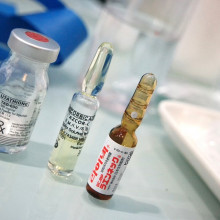
01:02 - How COVID vaccines get regulated
How COVID vaccines get regulated
Gino Martini, Royal Pharmaceutical Society
There was cause for celebration as a covid vaccine became a regulator-approved reality in the UK and the UK has become the focus of world media attention as the first western nation to formally approve a coronavirus vaccine for public use. Nevertheless, some are questioning why Britain’s been able to move so fast. According to the UK Education Secretary Gavin Williamson, speaking to LBC, it’s because we live in GREAT Britain. But, if that’s true, what are we actually better at? Well, in reality, the buck stops with a body called the MHRA, the Medicines and Healthcare Products Regulatory Agency. And it’s down to them that we’ve been able to approve Pfizer’s new coronavirus vaccine in record time. And to explain what’s involved, what gaps still remain in our knowledge, and what’s happening with the other major vaccine contender, AstraZeneca, Chris Smith spoke with Gino Martini, from the Royal Pharmaceutical Society…
Gino - Any new medicine has to be reviewed and obviously tested. The MHRA, their job is to inspect and review the data that's been generated. So all pharmaceutical companies have to do a period of testing. What we call clinical trials testing, what we call phase one, phase two, phase three, where effectively the medicine, in this case, the vaccine is tested in human volunteers and subjects which are representative of the population of people you're going to be giving the vaccine to. So you create these clinical trials, the data's collated, and then the whole data are then put together in a dossier. And that's then reviewed by the MHRA. In this case, what's happened is that the MHRA have been working in real time with the manufacturers and reviewing the data in real time. So that's why we've been able to get an accelerated review.
Chris - Is it as simple as that? Because what some people, I think quite legitimately, are pointing out is that normally it takes 10 years to make a drug or a vaccine and get that to market, which means by the time it gets there, you've got 10 years - in some cases - of follow-up from the first time a person was exposed to that drug to the time at which you begin to market it. Here, we've got 10 months. So we don't have that long-term insight.
Gino - True. But what's happening here is that the MHRA will be actively reviewing people who have been vaccinated. So there's already a system, it's called surveillance. And so there'll be monitoring people being vaccinated just in case there are any adverse events out there. The point we need to understand is the MHRA is a very, very good regulatory agency. We've got great expertise in looking at biological drugs, such as vaccines and understanding what data is needed to ensure quality, safety, and of course, efficacy.
Chris - Interestingly though, the MHRA have approved this agent for UK use, but the EMA, the European counterpart for the MHRA, have not approved this more broadly across the rest of the EU. And other countries in the EU and haven't done what the UK has done. So why have we got that difference? And if it's good enough for us, why is it not good enough for the rest of Europe?
Gino - But these things do happen. I mean, differences do occur in interpretation, with data, particularly when you have dossiers such as this. But again, I think what I alluded to before is the MHRA have what we call a lead rapporteur. So that's a lead coordinator when they were part of the EMA for all the new drug applications. Like I said, 60% of new medicines, I think in the last 10 years or so, the MHRA were coordinating that. They've got a great experience in this kind of area and a great network of key opinion leaders and experts who can give counsel on this data. So, you know, I'm fairly confident that if the MHRA are happy with the safety and efficacy and quality, then I'll take the vaccine.
Chris - There are some gaps in our understanding and in the data we've had generated so far though, aren't there? For instance, no one under 18 has had the agent tried on them. So they won't be being vaccinated. Pregnant women currently they're regarded as a risk group, but they've not been included intentionally in the trials. They've been actually excluded from the trials. So how are we going to deal with the fact that there are these individuals or groups in the population that haven't been actively explored?
Gino - As time evolves, they will obviously investigate those subjects. There'll be evolving the plan with the MHRA and finding what's the best way to include those people.
Chris - Now what happened with AstraZeneca and where are they now in this whole situation? Because they described the fact that there appeared to have been this mix-up with dosing as serendipitous, because actually it revealed that if you give a lower dose and then a higher dose, you might get a stronger response, 90% protection compared with say 60% with two higher dose hits. We're still trying to get to the bottom of that. Where does that leave them though? Does this mean the regulator may say, "well, I'm really sorry. The trial didn't go according to plan, it's back to square one. You've got to start again." What do you think is going to happen with them?
Gino - A difficult question to answer. I think there will be dialogue between AstraZeneca and the MHRA and they will be looking at the data in its entirety and where the gaps are. And again, I think based on that experience, this is the MHRA, they'll make a judgment call, obviously working with AstraZeneca. So at the moment, it's hard for me to answer that question because that dialogue, those conversations are obviously happening. But ultimately the MHRA will have to make sure that safety, quality, efficacy has been maintained.
Chris - Once the vaccine goes into society and people start to receive it, what mechanism or instruments are in place to follow up to make sure a) it's working and b) that the people that have had it and are getting it, they stay well, there are no long-term side effects, etc. How do we monitor the situation going forward?
Gino - Typically when something hits the market anyway, it's called phase four, and that's a period of what we call surveillance. Any adverse events are monitored by healthcare professionals. And there will be launched what we call a yellow card system where the system flags if there's been an issue. But my understanding is that the MHRA have launched an active recall system, will ask vaccinated individuals to monitor what happens. So there's going to be two mechanisms to keep a watching brief on those people who have been vaccinated.
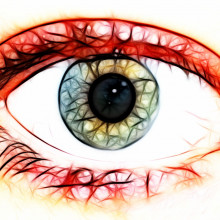
08:22 - Brain implant beams images into monkey brains
Brain implant beams images into monkey brains
Pieter Roelfsema, Netherlands Institute for Neuroscience
Artificial vision has made a great leap forward this week: the shapes of letters were directly transmitted into the brains of monkeys, that were able to “see” and respond to them without actually looking at them for real. It means we’re a step closer to developing ways to restore vision for some of the millions of people worldwide who’ve lost their sight. The team behind the breakthrough, who are based in the Netherlands, implanted a matrix of tiny electrodes into the region of the brain that decodes inputs from the eyes. Passing small currents into those electrodes turns on the nerve cells nearby, in the same way that signals from the retina in the eye would. This creates the impression of seeing spots of light - resembling pixels - each of which corresponds to one active electrode. And by varying the pattern of electrodes that are turned on, you can change the pattern of lit spots the animals see. Katie Haylor heard from Pieter Roelfsema how they’re doing it.
Pieter - The implant is composed of one thousand electrodes, basically tiny wires. Through one of them we pass electricity, electric current, and then you activate the nerve cells that are in the direct vicinity of the electrodes you're passing current through. If you stimulate one electrode, a person is going to see a dot of light. If you then stimulate a pattern of electrodes, you can create a pattern of these dots of lights and that can then become a recognisable pattern like a letter.
Katie - And tell me a bit more about the experiments that you've done. ‘Cause this is in macaque monkeys.
Pieter - After we implanted the 1000 electrodes, in the first experiments, we stimulated one electrode at a time and we basically found that for each electrode, the monkey detected it, and we trained the animal to make an eye movement to the location where he saw something. There is a very good correspondence to where we expected these artificial perceptions to emerge and where the monkey made his eye movements. So if there was an electrode where we expected that the perception would be here, the monkey made an eye movement there. So we were able to create perceptions at many different positions. And then the trick is you can basically work with it like a matrix works along the highway. So if you turn on one bulb, you'll see a dot of light, but you can also create patterns. And that's what we did. So we created patterns by stimulating multiple electrodes at a time. For instance, in the shape of a particular letter, the letter A, and then we found that the monkey was able to recognise those letters.
Katie - Do you know what these macaques actually see? Is it sort of all one colour of light?
Pieter - Only indirectly because you can't ask the monkey, "Hey, what did you see?" So therefore we have to do some tricks. So we train the animals to recognise letters and say for the letter A, they will make an eye movement to the right. For the letter B they will make an eye movement to the above and so on and so forth. Then at some point we replaced the letters by directly activating nerve cells in the visual cortex. And we're really excited that it worked. Then we know at least that the animals recognise these letters, but we can't ask them, "what do they look like?" Now one of our collaborators on the publication is Eduardo Fernandes. And last year he also implanted a human with the same type of electrodes. And of course, then you can ask, what does it look like? She reported most often, it looked like yellow-white,small dot of light, but sometimes it even has a small shape, like a like small edge.
Katie - Do you need a sort of certain number of electrodes to make a pixel?
Pieter - Yeah. So every electrode becomes a pixel. And if you stimulate it, the person - can also be a person who has been blind for several years - will see a single dot of light, like a pixel. And, um, the number of pixels you create or can create is then equal to the number of electrodes that you can stimulate. So in this particular experiment, we had 1000 electrodes. So we could create 1000 pixels.
Katie - Do you think we can get to the stage where you can get useful discernible information for human beings?
Pieter - Basically a question of how many pixels you can produce. The more pixels the better. There have been experiments in humans with only 60 pixels, for instance, in the eye. And that gives rise to slight vision. Of course, it's not terrific. If you go to one thousand, you can do a recognition of letters, maybe a very simple reading task where you see only a few letters at any one time, you can recognise simple objects. If you then go to 10,000, you could probably also navigate in a room, maybe even outside. So the more pixels you can produce, the better it will be. Now the resolution of the human eye is 1 million. We're far from that.
Katie - If the number of electrodes relates to the number of pixels, is there a point at which it kind of stops being practical?
Pieter - Yes, definitely. So 1000 is feasible and we think 10,000 maybe more is still feasible. It of course depends on the size of the electrodes. The electrodes that we're envisioning for the future are really, really tiny, and you can pack a lot of them on a single wire. And then it becomes feasible to get thousands of electrodes into the brain. I think that should be possible in the near future.

14:53 - Hayabusa2 brings asteroid samples to Earth
Hayabusa2 brings asteroid samples to Earth
Luke Dale, University of Glasgow
For the first time, samples of rock from a distant asteroid were brought back to Earth. The recovery is part of a remarkable Japanese Space Agency mission called Hayabusa2, whose goal is to discover the makeup of space rocks and match them to the meteorites that have fallen to Earth, as well as to reveal clues about the origins of Earth’s water. Adam Murphy spoke to Luke Daly from the University of Glasgow, who is one of the scientists who’ll be analysing the material from the asteroid…
Luke - The Hayabusa2 mission, went and visited an asteroid called Ryugu, it's an object in our solar system, known as a near-Earth asteroid, which means it's just in Earth's local neighbourhood. And it's about a kilometre in diameter and has a really interesting shape. It's kind of a spinning top, diamond-like shape, which is, well, now we know it's pretty common, but it was unusual at the time when we first saw it.
Adam - Why did we choose to go to this asteroid, then?
Luke - The asteroid Ryugu, there's kind of two reasons why we went there. The first is it's because it's a near-Earth asteroid. And so it's easy to get to using the rockets we have. And the second reason is, it's a type of asteroid called a C-class asteroid. And what that essentially means is, it's what we think about it and what it looks like, is it looks like some of the most primitive objects in our solar system. It's chemistry and minerals and everything inside. It probably formed in the first sort of, 2 to 3 million years of solar system history. By studying this, we can get a window into the environment around the Sun, literally as it first started to shine, before there were planets or anything. And it's also, what's known as a water rich asteroid and an organic rich asteroid. So quite a lot of it is made up of water and organic material, and essentially represents the building blocks you require for life as we know it to emerge.
Adam - And how do you collect a sample from a spinning top orbiting halfway between Earth and Mars?
Luke - Oh, so that's kind of a really awesome feat of Japanese engineering. Essentially what Hayabusa resembles is a Noo-Noo-like object from the Teletubbies. It has a large, sort of, chute that as it descends onto the asteroid and touches very briefly, the surface, it will then fire a tantalum bullet at the surface to kick up a load of dust. That dust then comes up the sample chute into the sample container, which then closes shut. And that's how you get a sample from an asteroid. The Japanese did an amazing job. It's not only did they do that once they did it twice. And the second time they fired a copper bullet ahead of time, and that created the first artificial impact structure on an asteroid. And then they went and sampled the crater that they'd made. And that's really important because the first sample would have been stuff from the surface. And that's been exposed for thousands of years to dangerous radiation from the space environment. So from the solar wind, small impacts from micrometeorites and galactic cosmic rays, which are these high energy particles emitted from the death of giant stars. And so some of that material might have been quite altered by those processes. The stuff in the crater won't have seen any of that. So the sample that we got from the crater will be truly pristine, truly representative of the environment around the Sun four and a half billion years ago.
Adam - That sounds really amazing. What are you going to be doing with this asteroid dust? What kinds of things will you be looking at?
Luke - I'm part of this very big international effort, which is really fun to be a part of, sort of hundreds of scientists from all around the globe. We're going to get three particles at Glasgow, which will be about the width of a human hair, to give you an idea of scale. So really kind of small, and we're going to be tearing them apart, one atom at a time using an instrument called an atom probe. In doing that, we're going to be able to figure out what each of those atoms are, like what elements, what's their chemistry, and where they were in the sample generating an atomic scale 3-D model. One of the kind of, key things we're hoping to see, is to be able to figure out how much water these objects contain and the material that's brought back contains, to essentially start getting into a really interesting science question, that's been sort of bothering us for a long time in the planetary science community is: where did Earth's oceans come from? So Earth should have formed in the inner solar system, where water was in the vapour phase, that water would have been blown out into the outer solar system. And so Earth should have formed relatively dry. And these water rich asteroids like Ryugu, present the most likely mechanism for delivering water to the early Earth. The kind of thing we don't know for sure right now is, how much water they have in them, because the meteorites that we have on Earth have been potentially altered by being on Earth, and coming through the atmosphere. So Ryugu's samples won't have that. And so we can get an idea about how much water is in there and what it looks like, to see if it is indeed the close match to Earth's oceans, and Earth's organic composition that we think it is. And that'll get us into some really interesting questions of: did these asteroids impact the early Earth, giving us that primordial soup from which life can then emerge from.
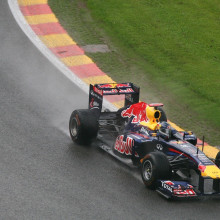
20:01 - F1 driver survives 137mph crash
F1 driver survives 137mph crash
Tony Purnell
Science, technology, and medicine came together this week, even collided you might say, to save the life of a Formula 1 driver last Sunday, after he was caught in one of their worst accidents in years. Phil Sansom reports how Romain Grosjean able to walk away relatively uninjured from what should have been a lethal, catastrophic crash…
Phil - If you were watching the Bahrain Grand Prix the other day, you couldn't have missed the horrific accident that happened when Romain Grosjean's car careered off the track and smashed into a metal barrier. It pierced the car, cutting it in two, and creating a huge fireball. Everyone assumed the worst, which is why it's so incredible that Grosjean not only survived, but did so almost completely uninjured.
Tony - That was a surprise because the accident looked really, really bad.
Phil - That's Tony Purnell, formerly part of the FIA, the motor sport governing body. And before that head of the Jaguar formula one team.
Tony - It was kind of a huge surprise to see a car burst into a fireball.
Phil - Really, you were surprised that there was an accident that bad in the first place?
Tony - Oh, very much so. Especially the car catching fire.
Phil - It's not a lucky coincidence that Grosjean survived because formula one might be the most extensively safety engineered sport in the world. I mean, it probably needs to be.
Tony - You know, there's 750 kilograms of car going at between one and two hundred miles an hour.
Phil - The FIA has been constantly making improvements. And before they even start to look at the cars, they first work on the track. See, the most dangerous part for a driver is going around tight bends at high speeds, the centrifugal force, which of course isn't a real force, just the inertia of a car that doesn't really want to turn, can send it flying off to the side.
Tony - So in the old days there were barriers all the way around the circuits, but nowadays you'll notice that the outside of the corners, they have really substantial runoff areas with just tarmac. The tires grip so well that you're better off scrubbing off speed than thumping into a barrier that's designed to give a little bit.
Phil - Tough luck for Grosjean though, because that's not where he came off the track. He was actually coming in the inside after a bend.
Tony - So it was a very unusual accident.
Phil - But as soon as his car hit the barrier, he was protected by the strength of his car's chassis.
Tony - The cars are subject to a really severe crash impact test, literally bolted to a platform and a great slab of concrete on a pendulum swung into them.
Phil - Now he still could have hit his head on the barrier itself. After all formula one involves open top cars, and given that he was going at 137 miles an hour, that's not a nice impact, but the bar didn't hit his head. It glanced off a feature that's only existed in formula one cars since 2018 called the halo. It's quite simple, actually it's a titanium bar that curves around the back of the driver's head and attaches to the car in several places.
Tony - Which protects the driver primarily actually from front wheel breakages and other cars being lifted up into the driver's cockpit.
Phil - The next life-threatening condition that Grosjean had to avoid was whiplash. After all, the black box in his car recorded a reverse acceleration of 53 g. What saved him was the extensive padding around him, plus his helmet.
Tony - Which is a very strong composite material.
Phil - It comes with an attachment to his shoulders via something called the HANS device.
Tony - Which protects the driver's neck.
Phil - But Grosjean wasn't out of the clear just yet. There was after all a fireball, which engineers say is strange. The fuel tank is as extensively engineered as the rest of the car.
Tony - The bag is literally bulletproof and there are valving arrangements. So the fuel wouldn't spill out. It would cease flowing immediately.
Phil - So they're still not quite sure what happened, but thanks to the driver's flame resistant suit and to the medical team that got to him at lightning speed, he managed to get out of the wreckage before any damage was don,e.
Tony - I believe the suit's good up to about 370 degrees centigrade. His gloves nowadays also contain sensors that are basically biometric scanners. There's also, I believe, an oxygen sensor in the gloves
Phil - Christ, he's engineered up the wazoo.
Tony - Absolutely. I don't think his survival was fluke. I think it's a great tribute to a whole armory of small things, which add up to the best example of a safety infrastructure, there is in sport.
Phil - And the innovations that happen thanks to formula one often become the safety devices of future road cars, but don't go crashing into barriers at over a hundred miles an hour just yet. Let's leave that one to the professionals.
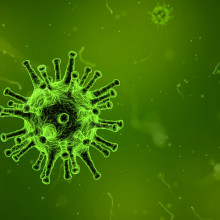
26:44 - How did the HIV pandemic begin?
How did the HIV pandemic begin?
Rowena Johnston, Foundation for AIDS Research
So what’s the history of the virus? HIV was discovered by the Paris Pasteur Institute scientists Françoise Barré-Sinoussi and Luc Montagnier in 1983. But it had been circulating in humans for almost a century by then. How do we know that, though, and where did HIV come from in the first place? To shed some light on this, Adam Murphy spoke to Rowena Johnston, director of research at the Foundation for AIDS Research in New York...
Rowena - Well, HIV really is the story of the bad things that happen when a virus jumps from one species to another. In the case of HIV, there are chimpanzees that live in central West Africa, and they have a virus called Simian Immunodeficiency Virus, obviously closely related to Human Immunodeficiency Virus. And the most likely scenario is that back during the early and mid 20th century, there was a lot of building of infrastructure there in central West Africa, mainly railways; and there was a law that stated that workers on the railways had to be fed meat. So the Europeans in charge decided that the easiest way to accomplish that was to hunt chimpanzees, and I'm guessing they made the labourers do that. And in the course of butchering those animals, the chimpanzees, the blood might've made its way into cuts in the labourer's hands; and so the virus was able to make that jump.
Adam - And then how did it spread to be the epidemic and pandemic we know it as today?
Rowena - We are talking about a colonial- and upheaval-filled time in history in Africa. So we have a lot of these workers who may have acquired the infection; there was probably a lot of forced movement of many people in the country; there was poverty, there was sex work, there were vaccination campaigns, most likely needles were at least occasionally reused. And so there was probably some fairly dramatic spread of the virus for, let's say a couple of decades, the 1920s through the 1940s and 50s. You have expansion of the roads and the railways; the virus was able to travel out in all directions from central West Africa then. Certainly it headed southwards towards South Africa, which we know has the highest concentration of HIV cases today. It made its way east and north through Africa. And then in the late 1950s and early 1960s, when, for example, the Belgian Congo was going through a really rough time getting independence, the virus was able to spread across the oceans and it made its way to the Caribbean, and from there to the United States. And then it gets a little bit more speculative. It's thought that it spread from the United States to Europe and Asia and Australia, although there were probably direct introductions from Africa to Asia as well; there's a close connection between South Africa and India. But certainly we know that it was in the United States by the 1960s.
Adam - And then how do we ultimately identify it in 1983?
Rowena - Well, by the early 80s, HIV had spread to enough people around the United States that doctors noted that there was a cluster of mysterious medical cases in Los Angeles and New York, and that those cases had some commonalities. And they decided to publish about that in 1981 in the Morbidity and Mortality Weekly Report; it's a publication put out by the US CDC. And that's when we traditionally date the start of the HIV epidemic, even though we know it had been around quite a long time before that; but given the publication that allowed other doctors to identify that they also had similar cases, it took a few more years, as you notice in your introduction, to identify the virus that causes what we now call AIDS, and a couple of years after that identify the first antiviral. And really since the 80s and 90s, HIV has been incredibly interesting to scientists. It's a relatively unusual virus and it's an extraordinarily difficult virus. As you noted, it integrates into our DNA, which is quite unusual for a virus; but that combined with a few other characteristics means that HIV is not cleared by the immune system. But it's also extraordinarily difficult - really, almost impossible, but not quite - to clear the virus from the body, or in other words to cure, which is what we at amfAR are aiming to do.
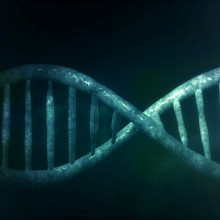
How is HIV treated
Ravi Gupta, University of Cambridge
When HIV was first discovered, bullish noises were made by researchers and politicians worldwide that there would be a vaccine before long. That hasn’t happened yet, and we’ll come to why later in the programme, but the development of drugs to control the infection certainly has been a success story and it’s been possible to convert what would have been a lethal infection into a treatable disease. These drugs are called antiretrovirals. So how do they work? Chris Smith spoke to Ravi Gupta, who specialises in HIV at the University of Cambridge
Ravi - So as my colleague Rowena mentioned, the virus is an unusual virus: a retrovirus. And that means that it comes in with a genetic code that's actually made up of RNA, and what it needs to do is make DNA. And so what it does is uses an enzyme called reverse transcriptase which converts that RNA to DNA; and this is a key enzyme without which the virus can't survive. And one of the main classes of drugs that we treat HIV with is a class called reverse transcriptase inhibitors, and these are drugs designed to block that enzyme. Now after the virus has made DNA versions of its genetic material, the HIV genetic code in fact becomes part of our own genetic code, in our white blood cells; and that's a process called integration. And that's another target of antiretroviral drugs. Once the virus has become part of your genetic material, it then undergoes what we call a reactivation event, where it starts generating copies of itself, essentially. Once that process has started, you get protein units, and they need to be chopped up into the relevant pieces in order for the virus to mature; so those proteins are generated as long chains, they need to be cleaved. That process is coordinated by an enzyme that HIV encodes, it's called protease. This causes those chopping up events in order to enable maturation of the virus. And that's a third, very potent class of drugs: labelled protease inhibitors. So those are three general drug pluses that have been used to treat HIV, that really follow the life cycle.
Chris - And we tend to use them in combination. It's not like if I had meningitis, and someone would give me the antibiotic best for treating that bacterium; when we treat HIV, we use combinations of these drugs all at once. That's called HAART, isn't it? Highly Active Antiretroviral Therapy. Why do we do that?
Ravi - Yes, this is a very, very important point, and it's one of the things that made HIV so hard to control for so long. Because this virus mutates so rapidly, as you mentioned earlier - and that's one of its survival strategies - it also generates large numbers of viruses very quickly. So you've got a huge number of virus replication events going on in the body at any one time. If you imagine a drug going in there, depending on how potent the drugs are, there will always be a few viruses that have got mutations that escape that drug; and therefore those viruses will survive and they'll carry on generating copies of themselves, and gradually that will take over the virus population. We try and get around that by using combinations of drugs, so that at any one time we can block almost all mutants that are generated, and therefore with combinations of drugs, the probability of a virus coming up with mutations to all two or three drugs is then diminishingly small. And that's what gives you the chance of long term suppression of HIV replication.
Chris - It's a bit like the Swiss cheese model, isn't it, where you've got holes in the Swiss cheese and you just put lots and lots of slices, and the holes don't line up; so the chance of a virus floating through all three slices is very slim indeed. Why though, if these drugs are so potent, and so effective, and people have unrecordable levels of virus in their body when they're on them... why are they not cured?
Ravi - This goes back to the idea of integration. Although we can reduce the numbers of new viruses coming out of cells, it's very difficult to destroy or remove those white blood cells that have been infected during the course of the infection, because of this integration event that I mentioned earlier. Now one of HIV's genius strokes, you might say, is it preferentially targets what we call memory CD4 cells; and these are white blood cells that offer us lifelong protection from infections that we encounter during our lifetimes. And so these white blood cells are there to protect us over many decades, and reactivate as soon as they see that pathogen again. And because HIV goes into these sorts of cells, this long lifespan enables HIV to essentially persist indefinitely.
Chris - But there have been cures - okay, two of them - haven't there. What's happened in those people who've been cured of HIV?
Ravi - The reason that cure has been made possible is really due to the fact that chemotherapeutic drugs have the ability to destroy these memory CD4 T cells that I've been talking about. And this knowledge of destruction of white blood cells is combined with another piece of knowledge that science brought us, which is that the protein CCR5 - which is essential for HIV to cause infection of cells in the first place, because it's a receptor on the surface of your cells - this protein is in fact absent in about 1% or less of Europeans. And if you have a dysfunctional or an absent CCR5, you're actually protected from actually being infected with HIV in the first place. And some doctors in Germany decided that they would aim to cure an individual, and the individual's now termed the Berlin patient, Timothy Ray Brown. They aimed to replace the blood system with a system that was resistant to infection with this CCR5 deletion; and combined with the chemotherapy, or the regimen to ablate or remove the white blood cells from the patient to allow the new blood cells to come in. And that that process probably destroyed a lot of the HIV, or if not all HIV infected cells; thereby allowing you to replace the blood system with a resistant one, and at the same time kill all the HIV infected cells in the body. And that's how we think the cure happened.
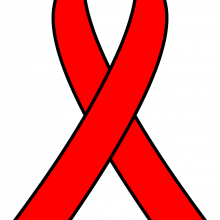
39:25 - Curing people of HIV
Curing people of HIV
Adam Castillejo, Ravi Gupta, University of Cambridge
The first person cured of HIV was in 2010. Sadly “The Berlin Patient” who's real name was Timothy Ray Brown, died this year after the cancer for which he received his curative stem cell transplant returned. But, in the last few years, another person, dubbed the London patient, has been cured of HIV. His name is Adam Castillejo, and he joined Adam Murphy to tell his story, then Adam Murphy spoke to Ravi Gupta, the doctor who cured him, about the science behind the cure...
Adam Castillejo - My story began in 2003 when I was diagnosed with HIV. It was very traumatic at that time. And then by 2011, 2012, I was diagnosed with cancer. A very different sentence, as I always call it. It was very challenging both times. At the time I struggled quite a lot until 2015. My chemotherapy regimes unfortunately were unsuccessful, time after time. And my only choice was to have a stem cell transplant, but the problem is, and I think it's important to people to understand, it's very complex when you're an HIV person to be able to go for a stem cell transplant. So I had the opportunity, and I will always be eternally grateful for it, by the team at Hammersmith together with Professor Gupta to offer me the possibility to have a stem cell transplant from an unrelated donor in 2016. And for me, as I say, I won the lottery. I couldn't believe it. I will be able to be cured not only for my cancer, not only my HIV. And that came out about 2017. I decided together with Professor Gupta and my medical team to stop my retroviral medication, as Professor Gupta was explaining earlier how complex this virus is. By 2017, I stopped my medication and we took very cautiously the approach to wait, because I mentioned about, as I call him my big brother, Timothy Ray Brown who sadly passed away this year. You know we have to be cautious about early rebounds. By 12 months we were able to say, oh, I think this is very promising, it looks like it's not going to rebound. By early 2019, we decided it was time to show the world it's not only Timothy Brown, it can be replicated. In 2020 I decided to rebuild my name, to share my story of hope.
Adam - And it’s such an incredible story. How are you doing now?
Adam Castillejo - I'm doing okay. I try my best to cope with, as you know, a post-transplant life. As well with the COVID 19. So you have to keep kind of extra cautious or careful about things. I always keep my head positive and thankful for what happened to me. And I try to help and try to keep, you know - I feel like being positive helps me to cope with life. And I think that was one of my main tragedies, and last time I'm keeping this way, keeping going that way.
Adam - Brilliant. It's such a great story. Now we've also still got Ravi Gupta who was the doctor who treated Adam. So how do we know that Adam is actually cured?
Ravi - The answer to that is a difficult one because his absence of HIV has only been determined by looking very deep into blood cells for integrated HIV or even signs of HIV - genetic material. All of our tests came back negative, but it was interesting, after some exploration, we did find fossils of HIV genetic material. The material wasn't capable of making new viruses, it was little fragments. That's not unexpected in fact, and it was also found with the Berlin patient. So we used very sensitive methods, both in blood and in tissues to explore the possibility that there was HIV left behind. But as I said, we couldn't find any evidence that there was any virus capable of making new copies of itself.
Adam - And then is this something that could be rolled out on a wider scale?
Ravi - Of course, the big problem here is number one, that the two cures we've described required chemotherapeutic regimens in order to destroy HIV infected cells. And so those drugs come with side effects and they make you vulnerable to opportunistic infections. So there is a risk attached to them. The second problem of course, is you have to find a tissue match with a donor who has the CCR5 deletion. And that's the second problem because of course, as I said, it's very rare and it's only in Northern Europeans in general. So there were two major barriers to this - the safety of using chemotherapeutic drugs and transplant, and secondly, the donor matching. So what we believe is that this is proof of principle that really we can cure patients. And that was a really important thing because the Berlin patient happened and for 10 years we were not able to replicate it. So the good news is that this is a real thing. The next step is finding ways to get there safely and CCR5 gene therapy is one avenue that started being explored to modify CCR5 in individuals who have HIV in order to explore whether that can help elicit or induce remission and cure.

45:09 - Why is there no HIV vaccine?
Why is there no HIV vaccine?
Anna Maria Geretti, University of Liverpool
In case it’s somehow escaped your notice, we are living in a pandemic, and we’ve gone from not knowing about COVID-19, to having a vaccine in under a year. But we’ve been less lucky with HIV: decades later, there is still no vaccine. Why? Anna Maria Geretti is from the University of Liverpool, and spoke to Chris Smith about the struggles of a HIV vaccine...
Anna Maria - Yes, indeed. I think that we have been disappointed. I believe the first vaccine study was done in 1986 and it's been quite a long time and perhaps there have been 250 studies that have given us disappointing results. So is it possible? We continue to believe it is. Is it needed? I think we should perhaps remember that in 2019 alone there were about 1.7 million new infections in the world. And if we really want to be successful in limiting the number of new infections, we need to develop an effective vaccine. Is it biologically plausible? Is it possible to achieve a vaccine? Well certainly through these three decades and more of studies, we have learned a lot about HIV, the biology, how the body responds to the infection and yes, we've had setbacks, but we've also had some breakthroughs. I think that we mentioned, for example, how difficult it is to control the virus because the virus continues to change and escapes body responses, the immune responses. There are also other mechanisms that the virus uses to evade the control, and a major breakthrough I would say has been been the understanding of the fact that the virus uses sort of decoys - it triggers the immune system in chasing after the wrong type of parts of the virus, protecting away the true vulnerable part of the virus. And this has been a recent, relatively recent understanding that gives us hope that we may be able to really direct immune responses towards the right part of the virus, the right antigen, the right component of the virus, and that is the vulnerable parts of the virus. So we discovered these responses as being broadly effective against, against the virus.
Chris - Are there sort of any bits of evidence you can point to that would reassure us that it is possible to make an immune response against the business end of the virus so that even despite its best efforts to decoy our immune system in the way you've just been describing, we can nail it nonetheless?
Anna Maria - Well, I think it's important to remember that we have some individuals that are exposed to HIV, but not infected. And we've also gained a lot of understanding about the interaction between the virus and immune system from studying people that are called elite controllers. These are people that are infected with HIV so they have evidence of the infection. However, they do not show progression of the disease. Somehow they found a way of keeping the virus at bay, keeping the virus under control, and that is without the need for HIV treatment, without the need for antiviral.
Chris - And how common is that? How many of those people are there?
Anna Maria - There aren't that many, there are a handful in each centre and indeed it's not a common occurrence, but we have learned a lot from studying this patient population. And also, as I said, we also learned that some people can make really very effective antibody body responses - what we call broadly neutralizing antibody responses. So responses that actually are directed against the vulnerable parts of the virus.
Chris - So I suppose your strategy would be, well let's study these people that, rare as they are, do appear to have an ability to control the virus. And then if we can work out what has happened in them, we can make the same thing happen in people who otherwise wouldn't be so fortunate. So we've basically got to build some kind of vaccine capable of making the normal person's immune response behave like one of these so-called elite controllers that you were just talking about.
Anna Maria - Indeed, that is one strategy. And it's also effective to think about new ways of presenting the proteins of the virus, the antigen of the virus, to the immune system. New ways that may induce a response which is even better than what can be generated spontaneously in people that perhaps are elite controllers, so spontaneously managed to control the infection. It is plausible, scientifically plausible, that we may find a way of presenting the virus protein in a way that is better than what happens during natural infection. And I suppose that that's really, what we would love to be able to achieve in HIV.
Chris - It's strange though, isn't it, that we have managed to put so much effort over so many years into this and it has sidestepped us at every turn.
Anna Maria - Yes, it's been disappointing. However, I will say there have been some obstacles. There have also been cases when perhaps the scientific world was distracted, or perhaps was focusing on the wrong aspects of the virus, trying to induce the wrong type of immune responses, or perhaps pursuing ways of developing the vaccine that were not the most successful. We've had a number of setbacks that were significant, but I will say that we also have now a new opportunity. I would like to think that the COVID 19 pandemic and the success of the development of the vaccine, particularly with this new technology, for example of the RNA-based vaccines, I think it will generate a renewed enthusiasm for the development of HIV vaccine. Because it really shows how if you combine efforts, you know, academic efforts, efforts from pharma, interaction with regulators, so this combined focus and investment into trying to develop a COVID-19 vaccine has paid off and the use of new platforms has paid off. Has indeed shown that it's possible to induce responses which are better than natural infection.

51:55 - QotW: Compost vs landfill for CO2 production?
QotW: Compost vs landfill for CO2 production?
This week, Phil Sansom’s been digging up an answer to this question from Robert...
Robert - Does household composting release fewer greenhouse gases compared to a landfill?
Phil - If I’ve got climate change on the brain - as I probably should - then should I be composting my food waste? Environmental engineer Sintana Vergara from Humboldt State University says...
Sintana - Yes, even if you are a novice composter, and have a great landfill nearby. The basic idea is that landfills are anaerobic systems; they are environments without oxygen. Without oxygen, the microbes digesting organic matter such as food waste will release methane, and methane is a very powerful greenhouse gas. Composting, on the other hand, is an aerobic process, and when microbes break down organic matter in the presence of oxygen, they release carbon dioxide - CO2 - rather than methane. While CO2 is also a greenhouse gas, methane is much more potent one, trapping about 30 times more heat than carbon dioxide.
Phil - Bear in mind that your banana peels will degrade more slowly in a landfill relative to a compost pile, so the emissions will be spread over time rather than coming in one short puff. But this doesn’t change the bigger factor that Sintana describes, which that the methane coming from the landfill is much worse than the carbon dioxide from the compost.
Sintana - Now let’s get to the numbers. We are going to be very conservative here and assume a very good landfill, and assume that we are average composters. Based on the U.S. Environmental Protection Agency’s WARM model..
Phil - ...which stands for “waste reduction” model, a free online mathematical tool for exactly these kinds of calculations…
Sintana - ...and assuming a top-of-the-line landfill, in which landfill gas is captured and used to generate electricity, one tonne of food waste deposited there will emit about 470 kg of CO2-equivalents. Let’s compare this with the direct measurement of actual home composting systems from a study published by Anderson et al (2010). They measured that an average of 160 kg CO2-equivalent per tonne of waste was emitted from home composting. That means that food waste thrown in a landfill will emit about three times more carbon than that same waste would if it were composted. And here we’re assuming a best-case landfill and a not-best-case composting system, and not counting any additional carbon benefits from composting, such as enhanced carbon sequestration when that compost is applied to soil.
Sintana - So composting is definitely better than landfilling, even under conservative assumptions. Composting could look even better if the home composting is done well, and if the resulting compost is used to grow plants, which sequester carbon in the soil.
Phil - And plus, as RD pointed out on the forum, no emissions from vehicles transporting your waste if you’re composting at home. Thanks to Sintana Vergara. Next time, a question about the birds and the bees, from listener Jordan...
Jordan - Why do females produce eggs inside the body at body temperature, but males have to produce sperm outside the body at a lower temperature?










Comments
Add a comment